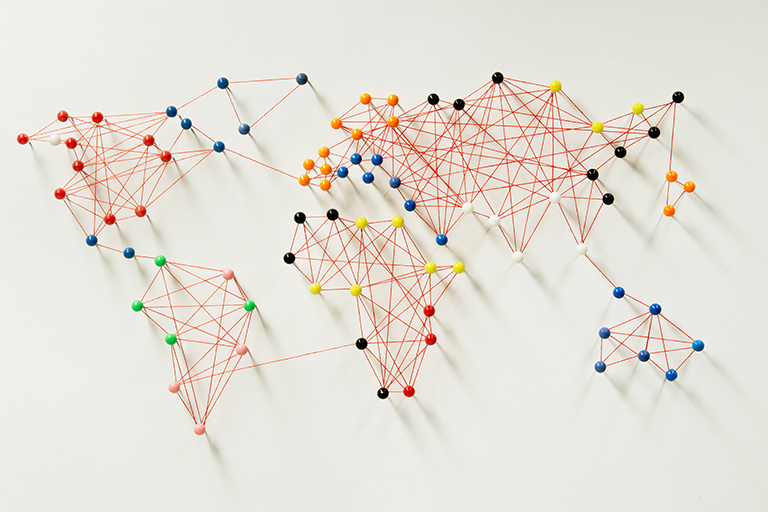Why Free Trade Agreements Will Boost SME Growth In Asia
Intra-Asia trade and regional connectivity are helping small businesses in the region win new customers – and free trade agreements are smoothing the way.
In the last few years, we’ve experienced enormous disruption across the globe, and Asia Pacific is no exception. As well as the economic impact of recent geopolitical and healthcare crises, disruption has changed how companies work, transact, manage supply chains and move goods around the world.
Of course, Asia’s economics – and challenges - are diverse. This region has long played a key role in global supply chains, though a shaky economic outlook may see some economies bounce back faster than others.
For instance, ASEAN’s growing GDP is expected to make it the fourth-largest economy in the world by 2030, signaling opportunity for greater resilience in future. Recent events prove that when global commerce grinds to a halt, local, domestic and regional trade can continue to sustain the economy.
After all, almost 60% of Asia’s trade is intra-regional, with the intra-Asia trade lane expected to ultimately outgrow the Trans-Pacific. But to enable resilience, connectivity within and beyond borders is essential.
Of course, Asia’s economics – and challenges - are diverse. This region has long played a key role in global supply chains, though a shaky economic outlook may see some economies bounce back faster than others.
Intra-Asia: Interconnected trading lanes with growth potential
For instance, ASEAN’s growing GDP is expected to make it the fourth-largest economy in the world by 2030, signaling opportunity for greater resilience in future. Recent events prove that when global commerce grinds to a halt, local, domestic and regional trade can continue to sustain the economy.
After all, almost 60% of Asia’s trade is intra-regional, with the intra-Asia trade lane expected to ultimately outgrow the Trans-Pacific. But to enable resilience, connectivity within and beyond borders is essential.

Post-pandemic, ties between Asian trading partners became stronger. In 2021, trade among economies within the Asia Pacific rose to the highest level in 3 decades, despite the mobility restrictions and supply-chain disruptions that hampered global trade. During the period, intra-Asia trade rebounded 31.2%,.
That’s why trade agreements - like the Regional Comprehensive Economic Partnership (RCEP) - are significant. RCEP enables a bigger marketplace between ten ASEAN members, plus Australia, China, Japan, New Zealand and South Korea. Not only is this the first multi-lateral free trade agreement (FTA) that China has taken part in, it’s the first time China, Japan and South Korea have entered into an FTA together.
The big three East Asian countries - connected by an FTA for the first time - stand to gain the most. In the first quarter of 2022, after the agreement had been inked, China's exports and imports with RCEP member countries grew steadily, reaching $203 billion.
RELATED: Seize greater trade opportunities with our RCEP guide
Trade among the big three in East Asia should account for a significant portion of the increase. Considering China is implementing the “Dual Circulation” strategy, it is going to propel more effective connections among production, distribution, circulation and consumption in and out of China.
That’s why trade agreements - like the Regional Comprehensive Economic Partnership (RCEP) - are significant. RCEP enables a bigger marketplace between ten ASEAN members, plus Australia, China, Japan, New Zealand and South Korea. Not only is this the first multi-lateral free trade agreement (FTA) that China has taken part in, it’s the first time China, Japan and South Korea have entered into an FTA together.
The big three East Asian countries - connected by an FTA for the first time - stand to gain the most. In the first quarter of 2022, after the agreement had been inked, China's exports and imports with RCEP member countries grew steadily, reaching $203 billion.
RELATED: Seize greater trade opportunities with our RCEP guide
Trade among the big three in East Asia should account for a significant portion of the increase. Considering China is implementing the “Dual Circulation” strategy, it is going to propel more effective connections among production, distribution, circulation and consumption in and out of China.
Free trade agreements a boost to e-commerce operators
The EU-Vietnam FTA came into effect in 2020 and highlights the growing importance of Vietnam and Southeast Asia on the global stage. In 2021, more than 200,000 certificates of origin were issued for Vietnamese exports worth $7.8 billion. These trade deals signal greater opportunities for SMEs, who are most impacted by shifts in trade regulations thanks to regular, direct interaction with customers.
RELATED: Intra-Asia shipping is now faster by one business day
Many SMEs experimented with operational changes during the pandemic in ways that have created lasting transformation. One example is the widespread shift from ‘just-in-time’ to ‘just-in-case’ supply chain networks. Another is e-commerce adoption, with retailers discovering that moving their business online gained them access to a new customer base.

Consumers – amid lockdowns - turned to online shopping for nearly everything, which accelerated e-commerce growth and resulted in a surge of new e-tail vendors. E-commerce continues to evolve; Asia's e-commerce market is expected to grow 12.5% on an annual basis to reach $5 trillion by 2026.
A flurry of online shopping and digital transactions means SMEs have become international business-natives, linking customers and suppliers all over the world. As e-commerce develops, we are focused on innovation and automation technologies that can enable cross-border commerce and help small businesses scale up.
Take FedEx Surround, a new ground-breaking collaboration powering the FedEx logistics network through Microsoft’s intelligent cloud. It gives greater visibility into supply chains with near-real-time analytics of shipment tracking, driving more precise logistics and inventory management.
A reliable logistics partner can be the resilient backbone for SMEs operating at a time of crisis. We offer interactive e-commerce delivery solutions such as FedEx® Delivery Manager. This tool allows e-merchants to offer their residential customers the ability to tailor their delivery options, including timing and location of receiving deliveries. In some Asian markets, automated WhatsApp notifications can be sent to end customers, providing a more customer-centric, contactless delivery solution.
We still live in a disrupted world, and SMEs are repositioning for the future. Together, we must creatively plan and adapt for what’s next. By making it easy for SMEs to do business with their customers, and creating future-ready solutions, recovery will flourish.
For more tips on business agility in Asia and beyond, head to our Small Business Center.
A flurry of online shopping and digital transactions means SMEs have become international business-natives, linking customers and suppliers all over the world. As e-commerce develops, we are focused on innovation and automation technologies that can enable cross-border commerce and help small businesses scale up.
Take FedEx Surround, a new ground-breaking collaboration powering the FedEx logistics network through Microsoft’s intelligent cloud. It gives greater visibility into supply chains with near-real-time analytics of shipment tracking, driving more precise logistics and inventory management.
A reliable logistics partner can be the resilient backbone for SMEs operating at a time of crisis. We offer interactive e-commerce delivery solutions such as FedEx® Delivery Manager. This tool allows e-merchants to offer their residential customers the ability to tailor their delivery options, including timing and location of receiving deliveries. In some Asian markets, automated WhatsApp notifications can be sent to end customers, providing a more customer-centric, contactless delivery solution.
We still live in a disrupted world, and SMEs are repositioning for the future. Together, we must creatively plan and adapt for what’s next. By making it easy for SMEs to do business with their customers, and creating future-ready solutions, recovery will flourish.
For more tips on business agility in Asia and beyond, head to our Small Business Center.
***





















 The Latest
The Latest